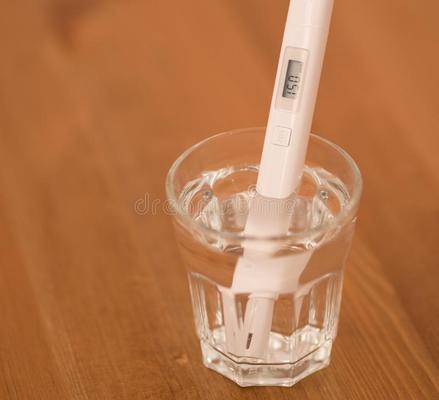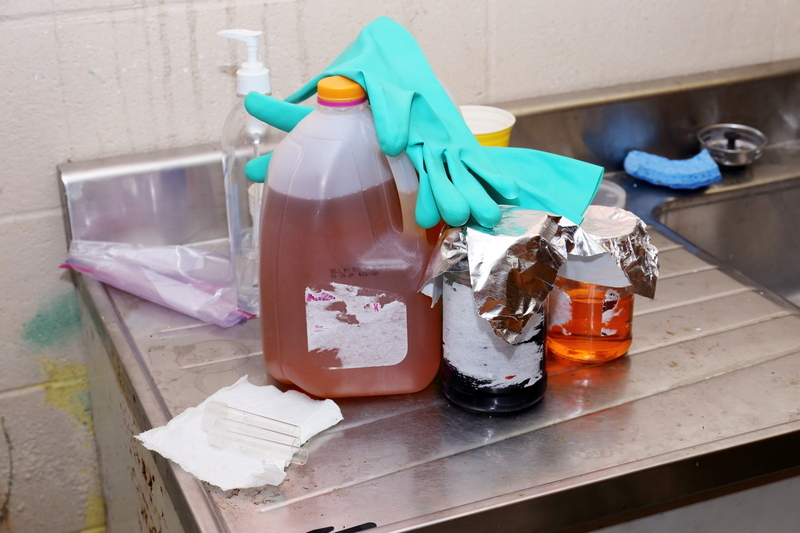
The findings here from the Environmental Working Group (EWG) reveal the team's previous quote in 2018, according to unpublished U.S. Environmental Protection Agency (EPA) information, that 110 million Americans could be contaminated by PFAS, may be much too low.
It is almost impossible to prevent contaminated drinking water from such substances, a senior scientist in EWG and co-author of this report.
Some are employed in various goods and industrial processes, and their replacements pose dangers.
Additionally, EWG found that on average six to eight PFAS chemicals were found in the sites that were tested, and also the consequences on the health of these mixtures are little known. "Everybody's exposed to a noxious soup of those PFAS chemicals," Andrews explained.
REUTERS/Mario Anzuoni/File Photo
In 34 areas where EWG's tests discovered PFAS, contamination hadn't been reported by the EPA or state environmental agencies.
The EPA has known since 2001 about the issue of PFAS in drinking water but has up to now failed to establish an enforceable, nationally legal limitation. The EPA said last season it would start the procedure to set limitations on among those compounds, PFOA, and PFOS.
The EPA said it's helped states and communities speech PFAS and that it's working to place limits on both chief substances but didn't offer a deadline.
In 2018 a draft report by an office of the U.S. Department of Health and Human Services stated the danger level for exposure to these substances must be up to ten times lower compared to 70 PPT thresholds that the EPA advocates.
The findings https://www.ewg.org/research/national-pfas-testing from the Environmental Working Group (EWG) reveal the team's previous quote in 2018, according to unpublished U.S. Environmental Protection Agency (EPA) data, which 110 million Americans could be infected with PFAS, may be much too low.
"It is almost impossible to prevent contaminated drinking water from such substances," said David Andrews, a senior scientist in EWG and co-author of this report.
Some are employed in various goods and industrial processes, and their replacements pose dangers.
Additionally, EWG found that normally six to eight PFAS chemicals were found in the sites that were tested, and also the consequences on the health of these mixtures are little known. "Everybody's exposed to a noxious soup of those PFAS chemicals," Andrews explained.
In 34 areas where EWG's tests discovered PFAS, contamination hadn't been reported by the EPA or state environmental agencies.
The EPA has known since 2001 about the issue of PFAS in drinking water but has up to now failed to establish an enforceable, nationally legal limitation. The EPA said last season it would start the procedure to set limitations on among those compounds, PFOA, and PFOS.
The EPA said it's helped states and communities speech PFAS and that it's working to place limits on both chief substances but didn't offer a deadline.
In 2018 a draft report by a professional of the U.S. Department of Health and Human Services stated the danger level for exposure to the substances should be around ten times lower compared to 70 PPT thresholds that the EPA advocates.
New lab tests commissioned by EWG have for the first time discovered the poisonous fluorinated compounds called PFAS from the drinking water of heaps of U.S. cities, such as major metropolitan regions. The results affirm the amount of Americans subjected to PFAS from polluted tap water was radically underestimated by previous research, both by the Environmental Protection Agency and also EWG's study.
According to our evaluations and new academic study which discovered PFAS prevalent in rainwater, EWG scientists today believe PFAS is probably detectable in most significant water supplies from the U.S., almost certainly in most that utilize surface water. EWG's tests found compounds from the PFAS household which aren't commonly tested for in drinking water.

Of tap water samples from 44 areas in 31 states and the District of Columbia, just 1 place had no detectable PFAS, and just two other places had PFAS beneath the amount that separate studies show pose dangers to human health.
In 34 areas where EWG's tests discovered PFAS, contamination hasn't been reported from the Environmental Protection Agency or state environmental agencies. Since PFAS isn't controlled, utilities that have chosen to check independently aren't necessary to produce their results public or report them to state drinking water agencies or even the EPA.
EWG's samples -- gathered by volunteers or staff between May and December 2019 -- have been examined by an accredited independent lab for 30 distinct PFAS compounds, a very small fraction of those thousands of compounds at the household of per- and polyfluoroalkyl substances. An EPA-mandated sampling program that finished in 2015 examined for just a couple kinds of PFAS and needed utilities to document just detections of a greater minimum level.
The EPA also merely mandated testing for systems serving over 10,000 individuals, whereas EWG's project comprised a sample out of a more compact system excluded by the EPA program. Because of these limits, the EPA reported discovering PFAS at just seven of those places where EWG's tests discovered pollution.
The samples with detectable levels of PFAS comprised, normally, six or seven distinct compounds. 1 sample had 13 distinct PFAS at varying doses. The listing of those 30 PFAS chemicals we examined, and the frequency with which they have been discovered, is detailed in the appendix.
PFAS are called"permanently compounds" because once discharged into the surroundings they don't break down, and they build up in our organs and blood. Exposure to PFAS raises the probability of cancer, injuries the growth of the embryo, and lowers the potency of pathogens. Biomonitoring studies from the national Centers for Disease Control and Prevention reveal that the blood of almost all Americans is infected with PFAS.
The most infamous PFAS chemicals are PFOA, previously employed by DuPont to make Teflon, and PFOS, previously a component in 3M's Scotchgard. Those compounds are phased out under pressure in the EPA, but they persist in drinking water, both individuals and the environment. Both compounds represented about a quarter of their entire PFAS level in every sample.
EWG has mapped PFAS pollution of drinking water or soil water in nearly 1,400 websites in 49 states. Formerly, our investigation of unpublished EPA data estimates that water provides for 110 million Americans could be infected with PFAS -- a quote which might be too low, according to our findings.
The EPA was initially alerted to the issue of PFAS in drinking water in 2001 but in nearly 20 years has neglected to establish an enforceable, nationally legal limitation.
From the absence of a federal standard, nations have begun to establish their legal limitations. New Jersey has been the first to place into some maximum contaminant limit for the chemical PFNA, in 13 ppt, also has suggested criteria of 13 ppt for both PFOS and 14 ppt for PFOA.
The EPA's Unregulated Contaminant Monitoring program comprised only six PFAS chemicals, and also the minimum coverage limits have been from 10 ppt into 90 ppt, obscuring the entire reach of PFAS contamination.
However, other communities are forthcoming with PFAS evaluation information. The Philadelphia Water Department says it is"proactively analyzing for PFAS in source water also hasn't discovered concentrations above EPA's advisory level" EWG's tests of Philadelphia water reveal complete PFAS concentrations at almost 50 ppt.
Our outcomes are supposed to underline the ubiquity of PFAS as well as also the vulnerability of the country's drinking water source to PFAS pollution.
Considering that the EPA program ended there has been no additional nationally testing of water systems such as PFAS. And a few regional communities, such as Ann Arbor, Mich.. , also Wilmington, N.C., often check for PFAS and launch the results.
EWG's tests represent just one sample from each water system and might not represent what's coming from a tap now. Results from one sample form a photo of what has been found in tap water at a particular website. They're probably representative of the water in the region where the sample has been taken but aren't meant to recognize particular water systems. The counties and cities recorded could be served by numerous public water systems, serving a variety of proportions of their region's inhabitants.
